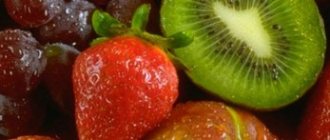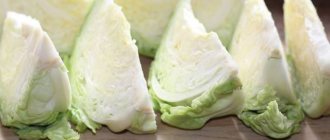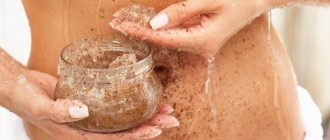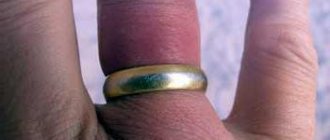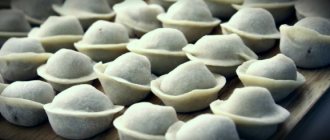The main reasons why there is little brine in sauerkraut
The most common reasons why cabbage is dry are the wrong variety of vegetable, as well as violations of the pickling technique. Let's tell you more about them.
Choosing the wrong variety of cabbage
When choosing a vegetable for pickling, you need to pay attention to its variety. For this purpose, you need to take only mid-late and late ripening varieties of white cabbage. The need to use only these varieties is due to the fact that the vegetable ferments when lactic acid forms in it.
And for lactic acid to appear, you need natural sugar in sufficient quantities, and it appears in the vegetable in late autumn. Vegetables that ripen early are not suitable for pickling because they contain little sugar, which will negatively affect the fermentation processes.
Violations of pickling technique
There may be little juice in the preparation if you add little salt to it during the cooking process. Salt promotes the release of liquid; its optimal amount can be considered 25 g per 1 kg of product. You can determine whether everything is in order with the product within a day. This is enough for the juice to appear on the surface of the workpiece, and the whole of it should be immersed in the juice.
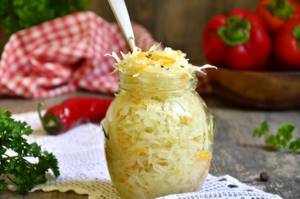
Factors that may contribute to mold growth.
Mold is rare, but there are some factors that need to be controlled to reduce the likelihood of mold formation.
Quality of vegetables.
It is better to use fresh and organic vegetables. Old, stale vegetables cannot ferment well.
Salt content.
Proper salt content in each batch of vegetables is important to prevent mold.
Fermentation temperature.
Temperatures between 18° and 20°C are ideal.
The cabbage should be immersed in brine.
For best results, it is important to ensure that the cabbage is always immersed in the brine. Use a weight.
Follow these simple rules. Make fermented sauerkraut and other vegetables at home.
In future articles I will introduce you to other fermented vegetable recipes.
Sauerkraut and other fermented vegetables supply the human body with the cheapest and most beneficial probiotics.
Remember this and be healthy!
Galina Lushanova
Galina Lushanova has a higher education (graduated from Novosibirsk State University with a degree in cytology and genetics), Ph.D. majoring in pharmacology. She completed training in dietetics and is a full member of the “Nutritionists of Russia” community. She has been running the “Food and Health” blog since 2011. Organizer of the First Online School in Russia “Food and Health”
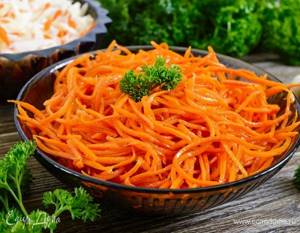
RAW CARROTS SALAD
Thanks for the helpful tips
Irina! Use it for the benefit of your health!
Do bacteria cause breast cancer? Can bacteria...
What are the benefits of mare's milk? And most importantly, who is it for...
Can diet alone cause excessively fast...
How to increase the amount of brine in sauerkraut
If the preparation does not produce juice, you need to know what needs to be done to correct the situation. The optimal solution in this case would be to add ready-made brine to the product.
You will learn how to make a suitable brine from these step-by-step instructions:
- You need to take 1 liter of water and bring it to a boil.
- Remove water from heat and add 1 teaspoon of salt to it.
- When the water becomes warm, add 1 tablespoon of sugar.
- When the brine cools to room temperature, it can be poured into the product.
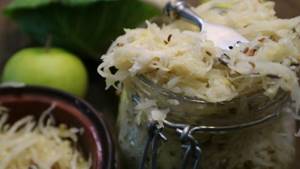
Additional tips for sauerkraut
To make the product tasty and juicy, you need to pay attention to some nuances when preparing:
- moon calendar. When fermenting, it is recommended to pay attention to the lunar phases. It is best to make preparations for the new moon;
- lack of vinegar. It is best for the vegetable to ferment naturally. When adding vinegar, the beneficial properties of the vegetable are significantly lost. An exception can be made only if the vinegar is homemade;
- oppression. When fermenting in a barrel, a load is required, and when preparing in a three-liter jar, you will need a simple plastic bag. Fill half the bag with water, release the air and tie a knot at the very end of the bag. After which the bag is carefully pushed into the neck of the jar, where it presses down the cabbage;
- suitable additives. You can add carrots, apples, lingonberries or cranberries to the preparation. For lovers of spicy foods, ginger and garlic are suitable. Onions are not recommended as an additive; in this case, the fermented vegetable cannot be stored for a long time;
- adding spices. You can diversify the taste of your preparations by adding cumin, coriander or anise seeds to the jar;
- fermentation. After salting and placing oppression in a jar for 2-3 days, you need to ensure the temperature for the jars in the room is +18..+20°C. After this period, the jars should be moved to a place where the temperature is 0°C. Foam that will regularly appear in the jar must be removed regularly. The fermentation procedure can be considered complete if foam does not form on the surface and the brine has become transparent.
If there is no juice in the cabbage during pickling, it is important to understand why this happens and how best to solve this difficulty. Following these tips, you can successfully cook it and avoid the lack of juice in the vegetable.
Why there may be little brine in sauerkraut
If the cabbage does not produce juice when fermented, little brine is obtained. There are several reasons for this.
Unsuitable cabbage variety
You could have made the wrong choice of variety or harvested the heads of cabbage too early. The best varieties of white cabbage to ferment are : Moskovskaya late, Rusinovka, Mara, Snezhinskaya, Belorusskaya-85, Yubileynaya-29, Nadezhda, Amager, Kolobok, Podarok and - the most popular - Slava.
Choose a head of cabbage that ripened in late autumn - at the end of October or November, after the first frost . It is at this time of year that a lot of natural sugar is formed in the vegetable, which is needed to release lactic acid - thanks to it, the cabbage will ferment well in the jar.
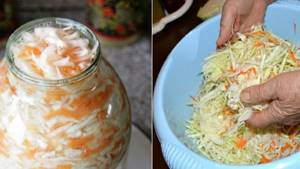
Important! To determine if a head of cabbage is suitable, look at its leaves. The whiter they are, the more sugar it contains and the more suitable it is for fermentation. It is best if there are no green leaves at all. Another way is to cut the head of cabbage in half. The cut should be white and the leaves should be crispy and sweet.
Errors during fermentation
Do not neglect salt when fermenting - it is needed to release liquid . But you shouldn’t get carried away with it, otherwise it will interfere with the process of lactic acid fermentation. Put it within 20-25 g per 1 kg of cabbage.
If you have not made a mistake with the quantity, after a day the entire contents of the jar should be immersed in the brine. Otherwise, you may lose all the beneficial substances of the vegetable, and the product will simply rot.
Important! Use regular coarse salt. Iodized cabbage softens the cabbage.
How to revive sauerkraut
In some cases, pickles can be returned to the normal fermentation process and the product will again delight you with a pleasant color and smell, and eating it will become tasty and healthy. When the product begins to smell musty, nothing can be done, so carefully monitor the process in the container from the moment you put the jar to ferment in order to save all the contents in time.
If it doesn't ferment
On the 2nd day, the prepared product should begin to ferment, but upon inspection it is clear that the process is not moving. In this case, if the cabbage does not ferment, but has a normal appearance and smell, you will need to follow a few simple steps to save it:
- It is necessary to add a little sugar diluted with water to the container with the product - 2 teaspoons per 1 kg of vegetables.
- Adjust the temperature of the environment where the cabbage is fermented. She does not like cold environments and extreme heat. The temperature that needs to be maintained has been discussed above.
What to do, how to increase the amount of brine
If the cabbage has been standing long enough to release juice, but there is clearly not enough juice in the jar, this is not a reason to refuse pickling.
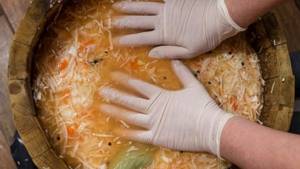
What to do if the cabbage does not give juice
Some housewives do not spare cabbage, and the part that lay on top without brine is simply thrown away, and the part that is soaked in juice is sent back under oppression. This is a sacrifice of quantity of a product for the sake of its quality - not everyone likes the taste of the product if, for example, you make your own brine and add it to a jar (more on this below).
If there is no juice, perhaps the reason is that the pressure is too light . It is worth adding weight to squeeze out more liquid. If nothing works out and you feel sorry for throwing away dry cabbage, make the brine yourself.
Interesting things on the site:
How to make brine if there is not enough of it
If you do not plan to store the workpiece for a long time, you can add homemade brine into the container.
Make it according to the recipe:
- Pour 1 liter of water into a saucepan and bring it to a boil.
- When the water boils, turn off the gas and add 1 tbsp. l. salt.
- Wait until the water cools down. When you can dip your finger into the water, add 1 tbsp. l. Sahara.
- The brine will be completely ready when it cools to room temperature. Now it can be poured into the container.
This cabbage can be stored for no more than three weeks at a temperature no higher than +4°C.
Presence of mold on sauerkraut.
If you see spots of a different color on the cabbage - green, black, red, pink, then this is not a reason to panic, but only for thought.
1. Can these spots be lifted? If they can be locally raised and removed, then this is a good sign.
2. What to do if mold is present?
You can get rid of the top layer of cabbage and have nice fermented vegetables below the brine.
In those layers of cabbage that are located below the brine, mold does not grow.
Mold can appear and grow on cabbage that is not immersed in brine and has access to oxygen.
Therefore, you need to scrape off the top layer, ventilate the jar for a few seconds, check the aroma and taste.
If the smell and taste are normal, then this cabbage can be eaten.
If cabbage has an unpleasant smell or taste, it should be thrown away.
Wash the jar thoroughly and try making a new batch of cabbage.
You can read about the dangers of mold in the article “The harm of mold to health, mold is not penicillin, but poison”
How to ferment cabbage correctly so that there is enough brine
To ensure that the juice is released in sufficient volume and the cabbage does not come out too dry, follow the correct salting order :
- Do not wash the forks before chopping, but only remove any green or rotten leaves.
- Then cut the head of cabbage into 2-3 parts and chop.
- Take regular coarse salt, but not iodized. If you put too much of it, it can stop the fermentation process and nothing will come out. Optimally – 20-25 g per 1 kg of product.
- Place two whole cabbage leaves, generously sprinkled with salt, on the bottom of the jar to soften.
- Before fermenting, remember the chopped cabbage with your hands or a rolling pin, and after you put everything in the container, press it harder inside with your fist so that the juice begins to come out.
- If you ferment in a saucepan, you will have to weigh down the raw materials with something heavy. Place a plastic napkin on top, a plate or wooden grid on it, and pressure on top of everything. It could be a scalded cobblestone or a plastic canister filled with water. Metal objects - weights, barbell discs - and bricks cannot be used as oppression.
- If you have a three-liter jar, you can use the bag trick. Take a simple plastic food bag, fill it halfway with water, release the air, and tie it at the end. Then gently push it into the neck, and the weight of the water will press the cabbage.
- Fermentation will begin after a few hours, when foam forms on top. You will have to constantly clean it and make sure it doesn’t leak onto the floor. At first there will be a lot of it, then less and less. As soon as you notice that it is no longer there, you can try - everything is ready.
- At the end, you will have to pierce the cabbage with a wooden stick to the very bottom or stir it. This is to release gases that may cause the product to taste bitter.
- On average, cabbage ferments for about a week.
How to save a product
Sauerkraut has high nutritional value, since this method of preparation preserves the maximum amount of nutrients.
In addition to a large amount of vitamins (A, B1, B2, B5, PP), 100 g of the product contains:
- proteins - 1.6 g;
- fats - 0.1 g;
- carbohydrates - 5.2 g;
- dietary fiber - 4 g;
- starch - 0.2 g;
- ash - 0.9 g;
- organic acids - 79.2 g;
- mono- and disaccharides - 5 g;
- saturated fatty acids - 0.009 g.
Did you know? Traditional medicine attributes truly healing properties to sauerkraut. Traditional healers recommend using the fermented product and its juice for literally any disease, from a common cold to such serious diseases as epilepsy and bronchial asthma.
https://www.youtube.com/watch?v=ytdevru
To avoid the above mistakes, you must adhere to certain rules:
- The product must be stored at room temperature (22...24°C) for no more than 3-4 days, after which it must be moved to a cooler place, or better yet, in the refrigerator. In this case, it will retain all its rich taste.
- To release all the gases formed in the starter, you need to pierce the vegetable mass with a wooden stick every day (2-3 times) to the very bottom and send the product back to the refrigerator to ferment.
- The oppression must be used during fermentation so that the juice comes to the surface, since there must be more brine itself than the product.
- For successful fermentation, it is necessary to use salt in strict proportions: 1 tbsp. l. (20–25 g) per 1 kg of vegetables.
- For fermentation, you should use only table salt.
- Late varieties of cabbage are the best option for pickling because they contain more sugar, which affects the rate of fermentation.
In some cases, if some mistakes were made and the fermentation process failed, the product can still be saved.
Important! It is necessary to add no more salt than indicated above, since it is it that inhibits the fermentation process and the sourdough begins to deteriorate, acquiring an unpleasant odor.
If you oversalted
If the resulting snack turns out to be too salty, it must be transferred to a dry container and add pre-chopped fresh vegetables (peppers, carrots, etc.), which can absorb some of the salt. If the brine has already covered the entire product, you can drain some of it and add boiled water instead. To neutralize the salt level before eating cabbage, you can season it with vegetable oil and add onions.
If on the second day the cabbage has not started to sour, you can add sugar diluted with water to the preparation (2 tsp per 1 kg of vegetables).
Tips and tricks on the topic
A few additional tips will help preserve the benefits and extend the shelf life of the product:
- Follow the cabbage storage regime and do not freeze it so as not to lose its beneficial properties. The optimal storage temperature in the refrigerator is 0...+2°C.
- Ferment cabbage in wide saucepans or basins. The larger the area of contact with air, the better the fermentation process.
- Do not add vinegar if you want to preserve the beneficial properties of the product.
- Don't add onions to the cabbage to give it extra flavor. This kind of pickling will not last for a long time.
What to do if sauerkraut does not give juice
TASTY AND HEALTHY!
It increases resistance to stress, activates metabolism, stimulates the production of red blood cells, promotes cell growth and tissue rejuvenation, regulates fat metabolism and lowers cholesterol levels in the blood, thus preventing stroke, strengthens muscles (especially the heart), and improves immunity. Can you guess what we're talking about? This vegetable is very familiar to you! And this is cabbage. And not just cabbage - but sauerkraut. The most popular autumn and winter dish. Of course, to prepare it, you will have to tinker longer than with salting or pickling. But the product will be not only tasty, but also very healthy, even medicinal.
If, when cooking cabbage, almost half of the vitamin B9 (folic acid) in it is destroyed, then during pickling it remains intact. And after fermentation there is even more ascorbic acid: up to 70 mg per 100 g. Sauerkraut contains 20 times more vitamin P than fresh cabbage. Due to lactic acid fermentation, a large number of probiotics are formed, which makes sauerkraut comparable in usefulness to kefir .
Sauerkraut is an excellent preventative against intestinal cancer. Brine is also very useful - it contains substances that prevent carbohydrates from turning into fat, and therefore it is excellent for the prevention of gastritis with high acidity, and is also recommended for people watching their weight.
It’s easy to say - sauerkraut. And there have already been so many failures: sometimes it turns out gray, sometimes sour, sometimes soft, sometimes smacks of rot. Not every housewife succeeds in making cabbage the first time. As in any business, there are rules and subtleties here.
Only late and mid-late varieties of cabbage are suitable for pickling. Early cabbage is not suitable: it has little sugar and therefore the fermentation process is worse.
There is nothing complicated about the fermentation technology itself. The main thing is to do everything clearly and consistently. Clean the heads of cabbage, remove dirty and greenish leaves, cut out rotten and frozen parts. No need to wash! Trim the stalk: it is an “accumulator” of nitrates and other harmful substances. Shred the cabbage using a shredder or knife. You need to shred the cabbage across the veins into strips approximately 2–3 mm wide. If you plan along, there will be a lot of rough parts. And the cabbage itself will lose its attractive appearance. You can also cut into pieces - squares or triangles. The larger the cut, the more vitamins and other nutrients are retained in it. In this sense, fermentation with whole heads of cabbage is ideal.
The taste of traditional sauerkraut can be improved not only with carrots, but also with berries (cranberries, lingonberries), fruits (apples, plums), mushrooms (salted and pickled), vegetables (pepper, beets, celery, etc.), spices (cumin , hot pepper, cloves, bay leaf, horseradish, etc.). If you decide to add seasonings to cabbage, then follow these proportions: for 10 kg of cabbage you need carrots - 200 g, apples - 800 g, cranberries or lingonberries - 200 g, cumin or anise - 5 g, bay leaf - 3 g, sweet pepper – 1 kg, beets – 1 kg.
Place the shredded cabbage and prepared additives on the table, sprinkle with salt and lightly rub with your hands, adding the necessary additives until the cabbage releases juice. You can use an enameled wide pan or basin - the wider the better. The larger the area of contact with air, the faster the fermentation process occurs.
Some housewives add not only salt, but also sugar when sauerkraut. It will certainly speed up the fermentation process. But at the same time it will make the cabbage softer.
Prepare the container. This can be either a large container or a regular 3-liter jar. Place cabbage leaves on the bottom. Pour 10–15 cm of cabbage and compact it tightly so that after laying the juice releases on the surface. And so layer by layer until the very end. Up again, cabbage leaves, put a clean cloth on them, circle and bend. If you ferment cabbage in a large container, place a small whole head of cabbage inside the cabbage mass. A 3-liter jar can be covered with a plastic lid with holes.
So we leave the cabbage to ferment for 2-3 days at room temperature (plus 17-21 degrees). If everything is done correctly, then after a day bubbles and foam should appear on the surface. This means that the fermentation process has begun. During it, juice will be released, so it is better to place the fermentation container in a basin or other container. In the future, this juice can (if necessary) be added to the cabbage.
If for some reason the juice does not appear for a long time, you need to increase the pressure or add brine. It is prepared at the rate of 1 tbsp. l. with a heap of salt per 1 liter of chilled boiled water.
Always remove foam. At first it will become more and more, and then it will decline. And when it disappears completely, it means the cabbage has fermented.
In order not to spoil the cabbage, you also need to get rid of the unpleasant-smelling gases formed during fermentation - hydrogen sulfide and carbon dioxide. Otherwise the cabbage will taste bitter. Therefore, every day (or even twice a day) pierce the cabbage with a long wooden stick in several places to the very bottom of the container.
Why a lack of brine is bad for sauerkraut
To understand why the situation is bad if sauerkraut does not produce juice, you need to understand what happens during pickling. The basis of the process is the fermentation of sugar contained in the leaves. Lactic acid bacteria multiply on this food. They feed on the sugars contained in the leaves, secreting lactic acid, which gives the finished product a vigorous taste.
The juice released during fermentation is due to the fact that the cabbage cells were destroyed during cutting. Salt also stimulates its secretion. First, the taste of the juice is determined by salt and substances released from the cells (sugars, essential oils, etc.). But then the juice ferments and becomes sour.
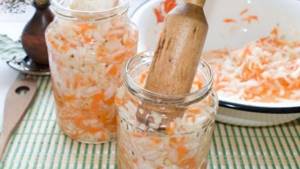
How does this affect the quality of the product?
If there is no juice when pickling cabbage, this will negatively affect the quality of the finished product. Lactic acid bacteria are capable of fermenting only the sugar that comes out into the brine. If its quantity is not enough, the following processes may begin:
- If there is not enough liquid, the cabbage will begin to come into contact with air. Because of this, moisture will leave the cut leaves and they will simply wither.
- Along with lactic acid bacteria, bacteria that cause rotting necessarily enter the product. At the initial stage, their development is inhibited by salt. But if there is no brine, putrefactive bacteria will begin to multiply faster than lactic acid bacteria. Their waste products will give the cabbage an unpleasant, rotten smell. Over time, it will deteriorate so much that all that remains is to throw away the product.
Important! If the cabbage does not release juice for more than 24 hours, it will no longer be able to be fermented. Only vigorous measures can save the product. You need to drain the water and fry the chopped mass with oil in a frying pan. This treatment will destroy putrefactive bacteria. Unfortunately, the fried cabbage will have to be eaten in a short time; it will no longer be possible to save it for the winter. A good way to recycle is to use fried cabbage as a filling for pies.
Since you need to act quickly when there is a lack of juice, you need to know what to do if there is not enough brine in sauerkraut. We’ll talk about measures to save the workpiece a little later, but for now let’s look at the reasons why little juice is produced.
Is it possible to eat sauerkraut in this case?
If you remove the white coating in time and no other taste changes are observed, then eat to your health!
To prevent this from happening, add mustard or horseradish to the brine. This additive will cope with mold and add spiciness to the dish.
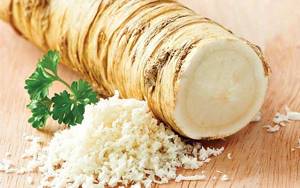
Mustard is best used in powder or grain form. Place the fabric bag with grains deep into the barrel or jar when laying the workpiece.
Add horseradish root only after the cabbage is ready. Horseradish stops the oxidation process, so if it is added too early, the product will only become salty, but not pickled.
Follow these simple recommendations, and crispy sauerkraut will delight your household with its unsurpassed taste all winter.
Why might there be little brine?
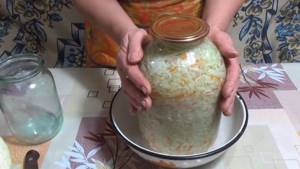
There may be several reasons why there is little juice in sauerkraut. The main thing is the wrong selection of varieties. Late varieties of white cabbage are optimal for pickling: Podarok, Slava, Moskovskaya late, Snezhinskaya, Belorusskaya 85, Nadezhda, Amager, Kolobok. They produce the largest amount of natural sugars, which will become food for lactic acid bacteria.
The second reason is the start of preparations too early. If the heads of cabbage were cut before autumn frosts (usually these occur in late October or early November), they will be high in essential oils and low in sugars. When cut, such heads of cabbage will give a dry, bitterish mass, in which it will be very difficult for lactic acid ferment to develop.
Advice! To make sure that the cabbage is ripe enough for pickling, inspect the top leaves covering the heads of cabbage. The whiter they are, the better. The cut of the head of cabbage should be white, and the leaf petioles should be fleshy, white and juicy. If the stalk or cuttings have a gray (or brown) tint, it means that the cabbage was frozen during storage. It is not suitable for fermentation.
How to ferment cabbage correctly so that there is enough brine
In order not to be tormented by the question of why the cabbage is not juicy, but dry, it is necessary to follow the pickling technology. Of course, many have their own recipes, but most housewives adhere to the following algorithm:
- Clean the heads of cabbage from leaves. The top 2-3 thin sheets are removed entirely. Rotten and green parts are also removed. After cleaning, there is usually no need for washing, as a clean white head is left.
- The cabbage “head” is cut into 2-4 parts and finely chopped.
- The chopped mass is laid out on the table, sprinkled with salt (at the rate of 25 g per 1 kg of chopped leaves) and thoroughly kneaded with your hands until the mass becomes wet from the juice that is released.
- Place 1-2 whole sheets at the bottom of the container. They are generously covered with salt. The chopped, salted and mashed mass is placed in layers on top. Each layer is crushed with fists, and oppression is placed on top.
- Note on what day the sauerkraut produces juice. You need to remove the foam and periodically scoop out the brine. If you don't do this, it will start to pour out of the container.
- From time to time (4-5 days after the juice appears), the mass is pierced with a sharp wooden stick. This will help the gas bubbles escape from the product. If you forget to release the gas, the cabbage will be bitter.
When the brine has stopped bubbling and rising (usually this happens after a week), the fermentation is complete.
Features of pickling unsucculent heads of cabbage
Sometimes, if the cabbage has “overstayed” in the garden, it becomes dry. Long-term freezing does not help improve the quality of raw materials. If grown or purchased cabbage is dry and produces little juice, you need to know what to add when pickling.
First of all, you should immediately prepare several liters of brine separately. After chopping and salting, the cabbage is poured with brine so that the mass is hidden under it. Then, as natural fermentation progresses, you may need to remove some of the brine. On the second or third day, a hole is made in the cabbage mass, into which a spoonful of sugar is added. This additive stimulates fermentation well.
Useful additives that increase brine yield:
- berries that contain a lot of natural acids (cranberries, lingonberries);
- sliced Antonov apples;
- grated carrots. It contains a lot of sugar, which will serve as food for the starter at the initial stage.
Many housewives add apples or carrots even when pickling normal cabbage.
Tips and recommendations from housewives
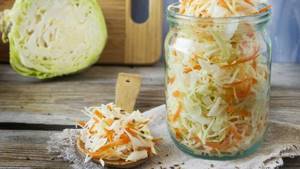
Experienced housewives know many tricks to give cabbage a special taste:
- To make the finished product more juicy, add grated carrots and sour berries (cranberries or lingonberries).
- Containers with a wide neck are better suited for fermentation: tubs, buckets, etc. The wider the neck of the container, the more fully the cabbage comes into contact with air. This stimulates fermentation.
We hope these tips will help you achieve the best results.
